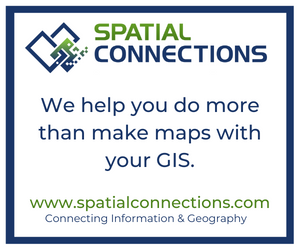The Illinois GIS Association (ILGISA) is excited to announce that submissions for the 2026 Student Scholarship are now open! This scholarship recognizes students — undergraduate or postgraduate — who are integrating GIS into their studies or research, regardless of academic discipline.
December 2025 Webinar
ILGISA Webinar Program 2025
We are pleased to invite you to join us for our webinar this month:
Read More
November 2025 Webinar
ILGISA Webinar Program 2025
We are pleased to invite you to join us for our webinar this month:
Read More
Announcing the ILGISA 2025 SIU-E Regional Meeting
"A Taste of ILGISA"
Read More
October 2025 Webinar
Read More
August 2025 Webinar
Unlocking the Skies: The Transformative Role of Drone Technology in the Geospatial Workforce
Read More
Congratulations to the 2025 Special Achievement in GIS (SAG) Award winners from Illinois
We're pleased to see City of Naperville, JLL, and PLRB recognized by Esri for their outstanding work in Geographic Information Systems. Your innovation, leadership, and dedication to advancing GIS technology make a lasting impact—locally and nationally.
Well done to all the individuals involved!
Board Spotlight: Burt McAlpine
We're excited to launch a new ILGISA Board Spotlight series, designed to introduce you to the dedicated members of our Board of Directors. Each installment will highlight a different board member, offering a glimpse into their professional background, current role, and passion for GIS. Through this series, we hope to foster stronger connections within our community and celebrate the individuals guiding our organization.
Read More
Announcing the New ILGISA Forum
Announcing the New ILGISA Forum
We’re excited to announce the launch of the New ILGISA Forum — a new online space designed exclusively for our members to connect, collaborate, and share ideas!
Read More
Board Spotlight - Josh Carlson
We're excited to launch a new ILGISA Board Spotlight series, designed to introduce you to the dedicated members of our Board of Directors. Each installment will highlight a different board member, offering a glimpse into their professional background, current role, and passion for GIS. Through this series, we hope to foster stronger connections within our community and celebrate the individuals guiding our organization.
Read More
The City of Rockford featured on ESRI's Industry blog for their Stormwater Outfall Inspection Solution.
Read More
Board Spotlight: Adam Aull
We're excited to launch a new ILGISA Board Spotlight series, designed to introduce you to the dedicated members of our Board of Directors. Each installment will highlight a different board member, offering a glimpse into their professional background, current role, and passion for GIS. Through this series, we hope to foster stronger connections within our community and celebrate the individuals guiding our organization.
Read More
Fulton County, IL, Western Illinois University, and State 911 Project featured on ESRI Blog
Check out the article: https://www.esri.com/about/newsroom/blog/illinois-school-safety-indoor-maps
Board Spotlight: Lauren Lee, GISP
We're excited to launch a new ILGISA Board Spotlight series, designed to introduce you to the dedicated members of our Board of Directors. Each installment will highlight a different board member, offering a glimpse into their professional background, current role, and passion for GIS. Through this series, we hope to foster stronger connections within our community and celebrate the individuals guiding our organization.
Read More
Board Spotlight: Steven Spradling
We're excited to launch a new ILGISA Board Spotlight series, designed to introduce you to the dedicated members of our Board of Directors. Each installment will highlight a different board member, offering a glimpse into their professional background, current role, and passion for GIS. Through this series, we hope to foster stronger connections within our community and celebrate the individuals guiding our organization.
Read More
June 2025 Webinar
We are pleased to invite you to join us for our webinar this month:
Read More
2025 Chicago Regional Meeting
Please join us for an enriching gathering of geospatial, economic development, and planning professionals and students at our Chicago Regional Meeting hosted by the Chicago Metropolitan Agency for Planning.
Read More
We're excited to launch a new ILGISA Board Spotlight series, designed to introduce you to the dedicated members of our Board of Directors. Each installment will highlight a different board member, offering a glimpse into their professional background, current role, and passion for GIS. Through this series, we hope to foster stronger connections within our community and celebrate the individuals guiding our organization.





